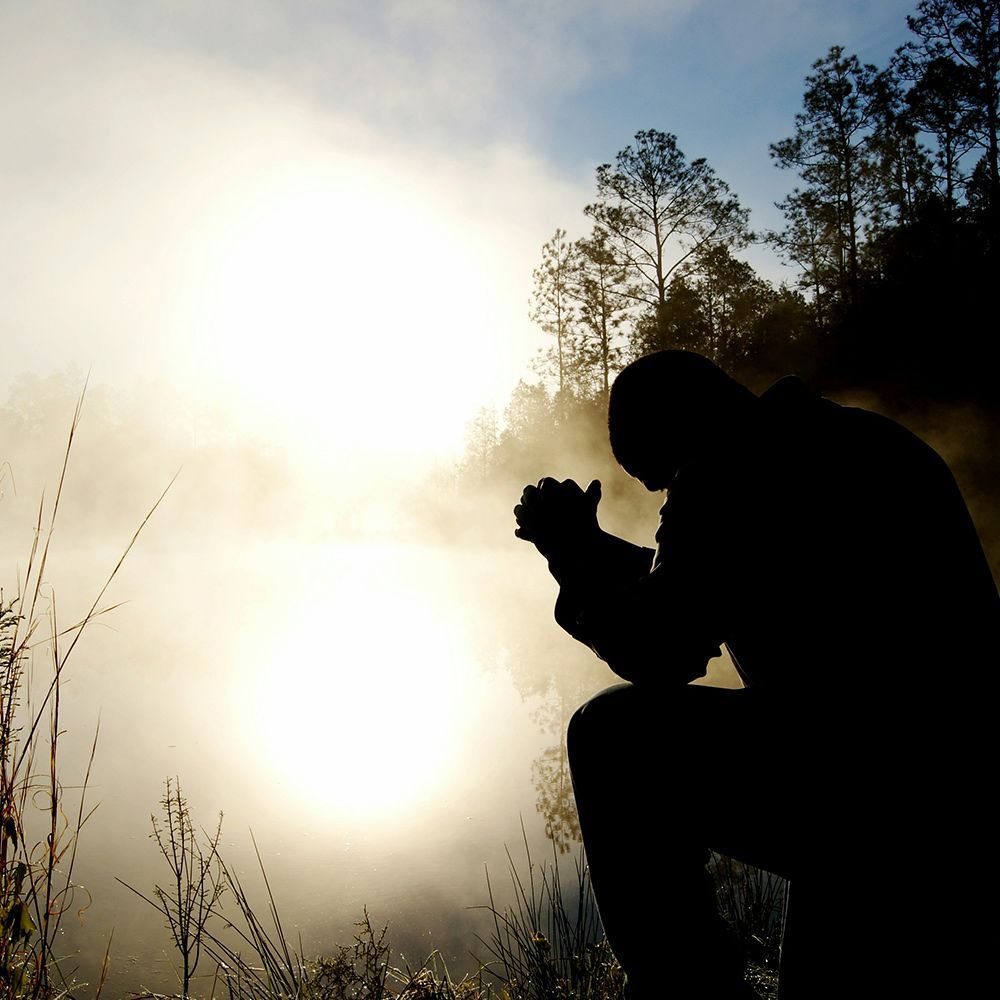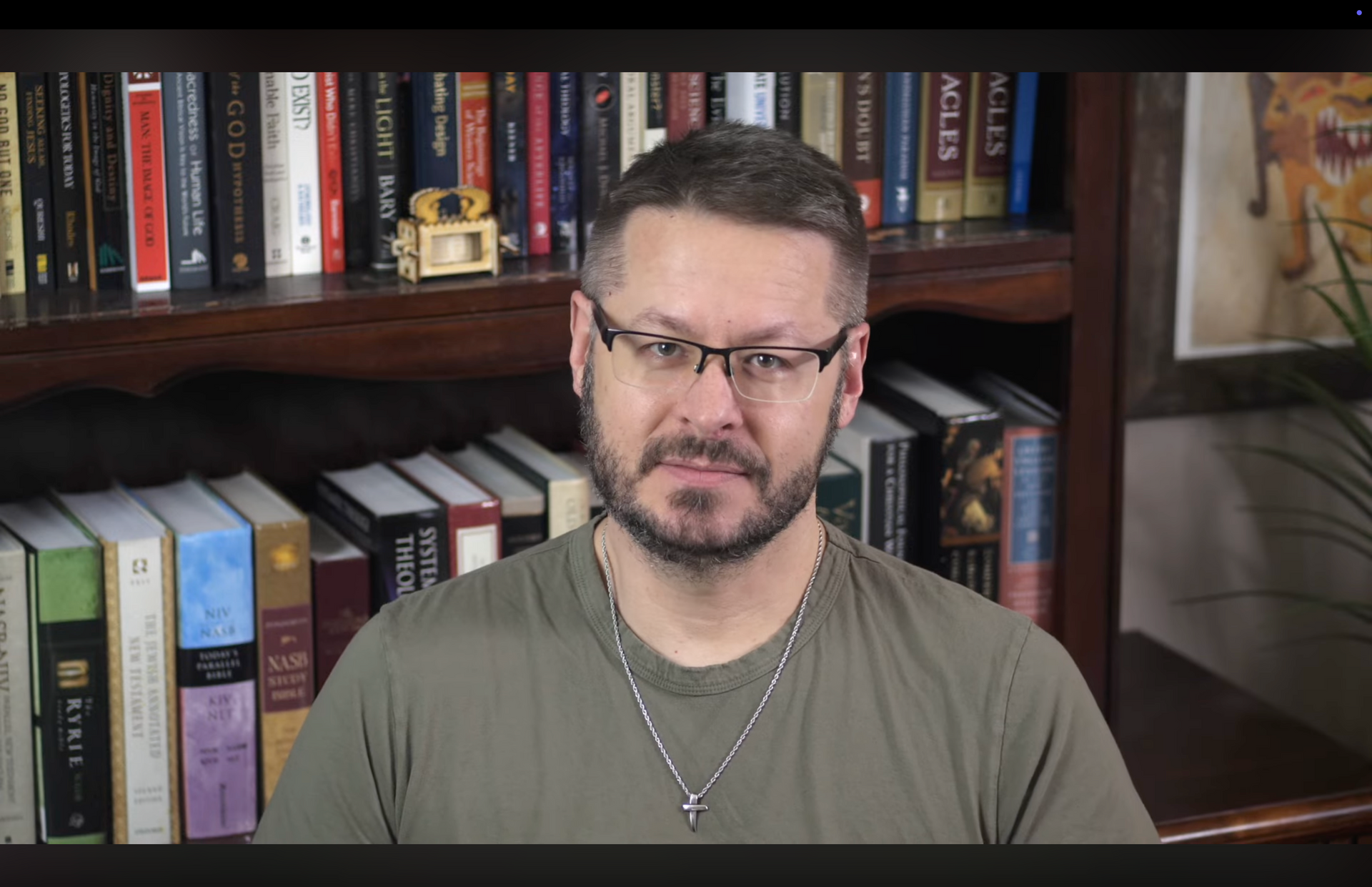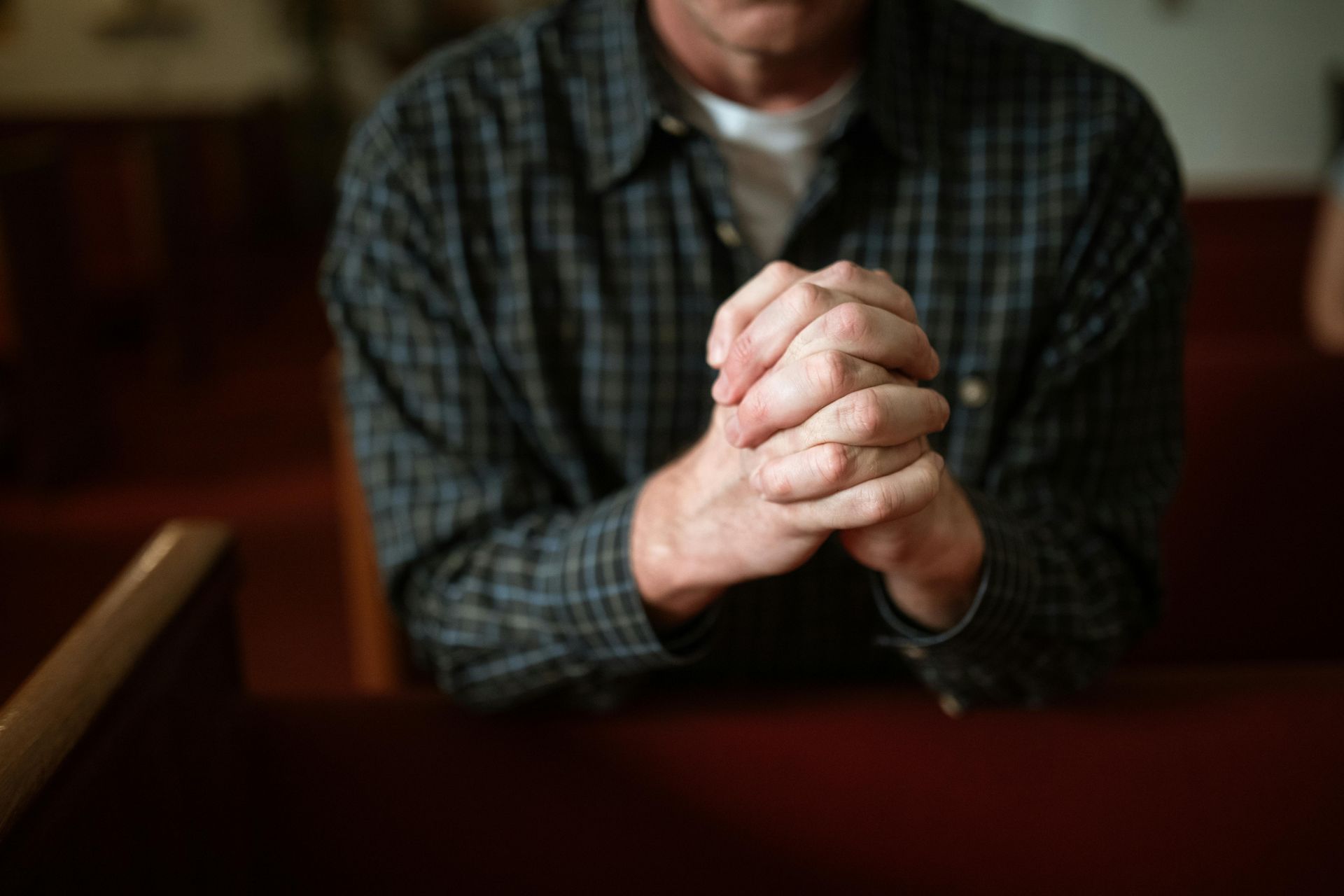What the Reformers Forgot Part 2 of 2
Erasmus of Rotterdam
These failures of the Reformers were recognised by their own harbinger, Erasmus of Rotterdam, who advocated rebaptism in the preface to his translation of Matthew's Gospel.
Erasmus wrote to the pope that it was rather the Anabaptists, who were persecuted by both Rome and the Protestants, that were the closest to a biblical Christianity. Erasmus, realizing the failure of Luther on a number of grounds, called the Reformation a travesty to which he preferred to remain a spectator. This came from one who repeatedly scorned the corruption and hypocrisy of Medieval Catholicism for its heresy on such brilliantly vitriolic and satirical works as "The Praise of Folly" and "Julius Exclusis".
While the Reformers were dynamic personalities, they were not dynamic thinkers. Luther drew his ideas from John Huss, Staupidz, and the humanists like Le Fèvre. Calvin drew on Luther, Farel, Oeclampadius, and Bucer. The English Reformers like Cranmer drew on Calvin and Luther.
All of these however were the natural result directly or indirectly of Erasmus, the greatest Christian humanist. Unfortunately, church history has never done him justice and blamed him for being indecisive. In fact, as we see from what became of Protestantism, he was not indecisive, but rather foresighted and aware of how Protestantism would end up. We must also remember that the Reformers did not rediscover the gospel as their followers abjectly claim until this day.
Long before the Reformation, Wycliffe in England, Huss in Bohemia, and Savanarola in Italy, had large followings of imperfect, but true Christians who believed the Word of God, and were trying to get back to it.
These of course were genocidely exterminated by the papacy using the Dominicans and Holy Roman Empire before the Reformation, as Rome used the Jesuits and Hapsburgs in its holocausts against the true church after the Reformation. But there was never an era when the Lord did not have people for His Own Name, whom while making mistakes did love Jesus, live for Him, die and watched their children die for Him, and tried their best to hold fast to His Word and, as faithful witnesses, point others back to prior to the advent of the reformers.
It was simply the collapse of feudalism and the Holy Roman Empire, together with the rise of humanism that sprung from the Renaissance and the invention of the printing press to mass produce translated Bibles that allowed the reformers to survive where others were exterminated by Rome and her agents.
During the Reformation era and what followed it, it was the Baptist sects (some good like the Menonites following Menno Simons, and some lunatics like the Munster Anabaptists following the Zwickau prophets - roughly late medieval equivalents of Mike Bickle, Earl Paulk, and Paul Cain) who attempted, for better or worse, to return directly to scripture.
The Protestants following the Reformers instead went back not directly to scripture, but to Augustine. Thus both Roman Catholicism and Protestantism spring not directly from scripture, but from Augustine's Platonised reinterpretation of it to again equate Christian identity with the national and cultural identity; that is making the church the new Israel. The results were, predictably, death.
The death Constantine and Augustine brought to the early church by making the church a temporal political power, was brought to Calvin's Police State in Geneva, Zwingli's in Zurich, Knox in Scot-land, etc.
As a pagan Rome was replaced by a Papal Roman State, so a Papal Roman State was replaced by a Protestant Church State.
For all of their good points in the establishment of a parliamentary democracy founded on biblical principles, both the English Puritans and the American Pilgrim Fathers soon found themselves engaging in genocidal war crimes against poor peasants in Ireland and burning alleged witches in Massachusetts.
Jesus said His Kingdom was not of this world.
Constantine, the Medieval Popes, and the Reformers, said it was.
Central to the popular Jewish rejection of Jesus was His refusal to accept temporal political power before the millennium (which the Reformers rejected).
We must grasp the fact that the twin pillars upon which the contemporary errors of Kingdom-Now Theology with its triumphalist over-realized eschatology and Dominionism are built are both the neo-gnostic latter montanism of "charismania", and the theonomic reconstructionism of highly Reformed Protestantism, particularly hyper-Calvinism.
This is why we see radical replacementist charismatic extremists such as Rick Godwin (a restorationist who teaches Israel is nothing but wasted money and Jews have no right to exist in the land of Israel) drawing their anti-futurist historicist and preterist eschatology from extreme Calvinistic reconstructionists like David Chilton. With both, Israel becomes the church and a theonomic regime that replays the mistakes of the post Nicean Constantinian church, and becomes the political kingdom of God on earth - a New Israel, which therefore can accord no place to the old one.
It is curious that any time an extreme Calvinism, stressing the notions of manifest destiny (stemming from an extreme view of predestination), permeated the social fabric with a church-state influence, the tragic results were gross social injustice.
This can be seen historically in the pro-slavery and later segregationist policies of the American Southern Baptists, the Apartheid policies of the South African Dutch Reformed Church, or the anti-Roman Catholic (not against the Roman church, but against the people in it) discrimination of Orange Unionism with the Strict Presbyterians in Northern Ireland. Hyper-reformed theonomic reconstructionism represents Protestantism at its worst, just as papal theonomy was Rome at its worst.
The replacementist super-cessationism produces a Judaized church with a theocratic government as oppressive and of-ten as hypocritical as the Sanhedrin ever were. Hence, the Reformation was a theologically incomplete, and thus a spiritually incomplete event.
We might see it as an aborted effort to restore biblical Christianity, as opposed to an authentic reintroduction of it.
The same nominalism that threatened to destroy Old Testament Israel, and produced the false church of the Middle Ages, was a fundamental component of Protestantism from its inception due to the errors of the Reformers.
This was recognized by Protestantism itself, when, within a few generations, Zizendorf's Pietists in Germany and Wesley's Methodists in England were trying to reform Protestantism from within, as the Reformers began by trying to reform Romanism from within.
The demise of Protestantism spiritually dovetailed with the theological decline of grammatical-historical exegesis going from a humanistic tool in the hands of Christians, to a humanistic tool in the hands of atheists.
The Baptists who tried to return to the kind of genuine sola scriptura faith that Luther only thought he had, were terribly persecuted and not infrequently murdered by the Protestants.
Even today, such evangelicals as Baptists, Pentecostals, Brethren, and Free Church are not, by classical historical definition truly Protestant, (although they are by etymological definition in that they witness for truth).
They are not Protestant in that they do not hold to a state church or accept infant baptism. They are rather the doctrinal heirs of the Anabaptists whom Catholic and Protestant alike persecuted.
The source of all of this tragedy once more relates back to the replacement theology that makes the church the new Israel. The endless arguments of Systematic theology, Dispensationalism verses Covenant / Reformed dividing Evangelicals from each other, stem from this same failure to grasp Jeremiah 31:31 and what it is addressing.
Because Abraham is indeed "Father of All who Believe" (Gen. 12: 1-3, Gal. 3:8, Isa. 63:16), and we see tremendous expressions of God's grace in the Old Testament (as with King Manasseh) and tremendous expressions of His wrath in the New Covenant (as with Ananias and Sapphira), dispensational theology admittedly understates the continuity between the two covenants, and the hyper-dispensationalism of Darby is erroneous.
Still, more moderate expressions of dispensationalism do more justice to Jer. 31:31 and the eschatology and ecclesiology that derives from it than does Covenant theology.
Dispensationalism (for all the faults of its more extreme expressions) rightly sees a spiritual and theological relationship between Israel and the Church, but keeps the distinction between them.
The Reformed Covenant theology of Calvinism understates the discontinuity between the covenants and overstates the continuity - in its classical form making the church Israel's replacement.
From this we again have the Protestant theonomic reconstructionism, not only supposedly replacing Old Testament Israel's theocratic state, but certainly re-placing the papal theocracy, with its Constantinian/Augustinian roots, with a Protestant version of the same thing.
While we should use Christian influence to be salt and light bringing a biblical influence into this fallen world, whether the Pope, Constantine, Calvin, and their latter day doctrinal heirs David Chilton, Gary De Mar, Gary North, Rick Godwin, and William Rushdooney approve or not, Jesus' true Kingdom is not of this world.
From the Unholy Crusades to the Seven Years War, such Dominionism has never brought us anything but bloodshed, and never will.
By equating the Church with Israel to the negation of Israel, the Reformers simply failed to correct what Constantine, Augustine, and their Papal successors got wrong. The Reformers forgot that Jesus' Kingdom was not of this world and His followers were called to be witnesses and salt and light in terms of a moral influence and a testimony in it, but they are not called to be of it - nor were they to set their hopes on it in any sense other than hoping in a resurrection and the return of Jesus.
The most sorry manifestation of these old errors still with us is the current state of much of Pentecostalism.
While Baptists sought out to restore some of the things the Reformers failed to (such as believers baptism, congregational autonomy, and a separation of Church and State) Pentecostalism, by definition and heritage, set out to restore the things that the Reformers and Baptists failed to restore, such as Gifts of the Spirit, an emphasis on the approaching return of Christ and Premillennialism. Yet today, we see Pentecostal preachers like Andrew Shearman telling a Nottingham congregation in the U.K. that he repents of ever having sung the hymn "This World Is Not My Home", leading the young people to chant "This World Is Our Home".
Such false and dangerous teachings may have no connection with the classical Pentecostalism Shearman now denigrates, but certainly is compatible with the classical Protestantism that the early Pentecostals reacted against.
A new generation of Pentecostal ministers who reject the beliefs of their fathers, yet still define them-selves as Pentecostals, are remembering to forget the things the Reformers also forgot.
They are not Protestant in that they do not hold to a state church or accept infant baptism. They are rather the doctrinal heirs of the Anabaptists whom Catholic and Protestant alike persecuted.
The source of all of this tragedy once more relates back to the replacement theology that makes the church the new Israel.
The endless arguments of Systematic theology, Dispensationalism verses Covenant / Reformed dividing Evangelicals from each other, stem from this same failure to grasp Jeremiah 31:31 and what it is addressing.
Because Abraham is indeed "Father of All who Believe" (Gen. 12: 1-3, Gal. 3:8, Isa. 63:16), and we see tremendous expressions of God's grace in the Old Testament (as with King Manasseh) and tremendous expressions of His wrath in the New Covenant (as with Ananias and Sapphira), dispensational theology admittedly understates the continuity between the two covenants, and the hyper-dispensationalism of Darby is erroneous.
Still, more moderate expressions of dispensationalism do more justice to Jer. 31:31 and the eschatology and ecclesiology that derives from it than does Covenant theology.
Dispensationalism (for all the faults of its more extreme expressions) rightly sees a spiritual and theological relationship between Israel and the Church, but keeps the distinction between them.
The Reformed Covenant theology of Calvinism understates the discontinuity between the covenants and overstates the continuity - in its classical form making the church Israel's replacement. From this we again have the Protestant theonomic reconstructionism, not only supposedly replacing Old Testament Israel's theocratic state, but certainly replacing the papal theocracy, with its Constantinian/Augustinian roots, with a Protestant version of the same thing. While we should use Christian influence to be salt and light bringing a biblical influence into this fallen world, whether the Pope, Constantine, Calvin, and their latter day doctrinal heirs David Chilton, Gary De Mar, Gary North, Rick Godwin, and William Rushdooney approve or not, Jesus' true Kingdom is not of this world.
From the Unholy Crusades to the Seven Years War, such Dominionism has never brought us anything but bloodshed, and never will.
By equating the Church with Israel to the negation of Israel, the Reformers simply failed to correct what Constantine, Augustine, and their Papal successors got wrong. The Reformers forgot that Jesus' Kingdom was not of this world and His followers were called to be witnesses and salt and light in terms of a moral influence and a testimony in it, but they are not called to be of it - nor were they to set their hopes on it in any sense other than hoping in a resurrection and the re-turn of Jesus.
The most sorry manifestation of these old errors still with us is the current state of much of Pentecostalism.
While Baptists sought out to restore some of the things the Reformers failed to (such as believers baptism, congregational autonomy, and a separation of Church and State) Pentecostalism, by definition and heritage, set out to restore the things that the Reformers and Baptists failed to restore, such as Gifts of the Spirit, an emphasis on the approaching return of Christ and Premillennialism.
Yet today, we see Pentecostal preachers like Andrew Shearman telling a Nottingham congregation in the U.K. that he repents of ever having sung the hymn "This World Is Not My Home", leading the young people to chant "T his World Is Our Home". Such false and dangerous teachings may have no connection with the classical Pentecostalism Shearman now denigrates, but certainly is compatible with the classical Protestantism that the early Pentecostals reacted against.
A new generation of Pentecostal ministers who reject the beliefs of their fathers, yet still define themselves as Pentecostals, are remembering to forget the things the Reformers also forgot.
With its replacementism drawn from the post Nicean Fathers, Medieval Romanism said the Lord's Kingdom is indeed of this world, and the kingdom was them.
So too, today's Reconstructionists and Restorationists, drawing on the Reformers failure to correct the ramifications of Constantine's Erastianism (control of the church by the state, usually with a mutual control of the state by the church to some degree) also say the Lord's Kingdom is of this world and that it is also them, courtesy of their replacementism. As the adage goes: "Failure to learn from History assures we are doomed to repeat its mistakes and reap the same manner of consequences for doing so."
What the Reformers Forgot about God's Election of Israel and His Gifts
A final dimension to the replacementist misconstruction of the New Covenant as prophesied in Jeremiah 31:31, is the relationship between replacementism and cessationism - the belief that the charismatic Gifts of the Holy Spirit ended with the Apostles. Romans 11 warns against these twin errors and directly connects the two errors as sharing a common source. Romans 11:29 tells us "The gifts and calling of God are without repentance". Paul's use here of the Greek term for repentance is a mere translation of the Hebrew concept of "teshuva", meaning to turn or return.
He argues that Jews remain beloved and God will not revoke either His sovereign call of Israel as a nation, for the sake of their fathers with whom He made the covenant, nor will He revoke His Gifts.
But which "Gifts" does he mean here? And why link God not revoking his gifts with His not taking back His election of Israel?
The answers are found simply by examining the context of Romans 11 and the structure of the epistle - itself intended to be read as a letter.
To begin with, there are no chapter breaks in the original manuscript. Chapter 11 is to be read in light of chapters 9 & 10, which precede it, and with a view towards chapter 12, which follows it.
Chapters 9 - 11 focus on God's election of Israel and His prophetic purposes for Israel relative to the church, with the law having been fulfilled in the Messiah. From here the text develops the theme of a remnant, both of Jews and, by implication, of Gentiles.
Grafted into the olive tree
The text of chapter 11 reiterates three times that God is not finished with Israel and the Jews.
While individual Jews may accept Jesus (remaining grafted into their own olive tree), most reject Him (to be cut off from it and to be individually replaced by Gentile Christians who accept Him), or some reject Him but then come to accept Him (being regrafted into the olive tree).
But the tree itself remains the same. Believing Gentiles replace Jews who are not believers and are incorporated into Israel in a spiritual sense, but the tree is still Israel, with its final branches (the last Christians) being Jews once more, just as the first ones were.
After this, in Chapter 12, Paul exhorts the readers to be transformed with the renewing of their minds and be not conformed to the world.
Paul next deals with the issue of spiritual Gifts in body life. These include not only ministry gifts of leadership, service, and teaching, but charismatic gifts like prophecy (verse 5).
Thus, Romans 11:29 serves as a natural transitional link from what precedes it to the things which follow it. The exegetical context of the verse reveals a clear thematic progression of inter-related aspects of church life, one leading into an-other. Hence, the theme that all men (both Jew and Greek), being fallen, require salvation - introduced in the opening chapters of the letter to the Romans - logically and neatly leads in the middle chapters of Romans to the issue of the purpose of the law to illustrate our fallen nature and need for a savior.
Then, with the Law fulfilled in Jesus, the question necessarily arises about the purpose of the Jews, now that the Messiah has arrived to fulfil the Torah.
So Romans 9-11 form the next natural step. Paul addresses it on the basis of what he has built up to that point.
Again, we see a natural progression in themes with a logical chain of theological and doctrinal issues lining up neatly, one following another, to answer the new questions raised by the previous section.
Following this, Romans then deals with the next point in the order of logic: how our subsequent Christian life as individuals and our body life as the church should work to carry out this New Law of Grace. So, after his admonishments to holiness and humility, he speaks of Body Life and the role of individual members with individual gifts.
To this Romans 11:29 again becomes pivotal. Both the gifts and calling are things God will not take back from Israel or the church.
If God is finished with Israel because of its unfaithfulness, I would like to find one reason that a God, who hates unjust balances, should not be finished with the church for its unfaithfulness.
True, there has seldom been anything more than a remnant of Israel who remained faithful - of which Jewish believers are the faithful remnant for now, as for instance those not worshipping Baal were in the days of Elijah (Romans 11:1- 5).
Similarly, there has rarely been anything more than a faithful remnant of Christians who were truly faithful. As we have often maintained, it is fortunate for both Israel and the Church that the validity of a covenant depends not upon the unfaithfulness of man, but rather the faithfulness of God.
Luther and the Third Reich
Going the way of Chrysostum's anti-Semitism rather than Paul's Philo-Semitism, Luther forgot Romans 9-11.
This was again very strange, considering Luther regarded Romans as central to the Bible's overall teaching and ultimate meaning.
Luther expected Jews to accept Christ when they were presented with an Evangelical Protestant Christianity as an alternative to the idolatry of Romanism. When they did not he preached that Jews should be hoarded into corals and forced to accept Christ at the point of a knife.
He taught Lutherans that they were to blame if they did not murder the Jews to prove they were Christians. This they did, culminating in the Holocaust. In Mein Kamf, Hitler loved quoting Luther.
The same Luther who inspired the Reformation also inspired the Holocaust, by forgetting Jeremiah 31:31 and Romans 11:1-29.
Instead of reforming the church from its anti-Semitic history to provoke the Jews to jealousy as God dictated (Romans 11:13-14), Luther ended his ministry as a vulgar old murdering tyrant - like the popes before him - merely replacing the Roman Catholic Jew Hatred of the Spanish Inquisition with a Protestant Jew Hatred which helped to inspire Germany's Third Reich.
His failure to separate church and state by not comprehending Jer. 31:31 but instead, as it were, Judaizing the church with Erastianism, led him to take a position on the German Peasant's Revolt where he called for the peasants to be stabbed in the back so as to preserve the church's marriage to the governing German nobility.
Luther's deranged viciousness propelled his own protégé, Melanchthon, to distance himself from him. Calvinists had a marginally more benevolent disposition to Jews, and later, in Holland and England, other Separatists were also somewhat sympathetic. But not Luther and the first Reformers.
Spiritual Gifts not revoked
The other half of Romans 11:29 notes what God will not revoke: it is Spiritual Gifts, which Paul discusses in chapter 12. Here we see what the Holy Spirit is wanting to warn us against.
Romans 11 urges us not to forget that it is the root that supports the church (the root once more being Israel).
Romans 12 encourages us to exercise our Gifts in concert with the other members of the body. Just as the Lord foreknew the dangers of wrongly believing that God had finished with Israel, so also in the same verse the Lord warns of the dangers in wrongly believing that the Lord is finished with the gifts.
The bogus view that God is finished with the Jews is just as faulty as the bogus view that He has finished with the gifts.
Both errors have the same source: an incipient hyperdispensationalism claiming that a different set of rules exists now than existed in the apostolic church. This sees apostolic Christianity as primitive and 'the perfect' as having come in the form of a book (the New Testament), in the same way as the Moslems believe about the Koran, and Mormons do about the Book of Mormon (except of course that the New Testament is truly God's Word).
Because this faulty view resembles Islam or Mormonism in a qualified sense, (we are not suggesting that cessationism denies the gospel or is fundamentally heretical but simply behaves in the same character) it becomes in essence a belief in a kind of third covenant, in some way distinct from the previous ones, yet claiming an essential continuity with them by borrowing on the motifs of the previous ones, but none the less with certain elements of the Old having passed away.
This position is arrived at by an eisegesis of 1 Corinthians 13, wrongly claiming that the perfect to come is the New Testament Canon.
Exegetically however, if the perfect has already come according to what is in the text, then hope and faith must have also passed away and are no longer necessary either, only love.
Cessationists of course would not reject the need for faith or hope, so we fall to see how their argument can do anything other than collapse.
Even today we see cessationists like Peter Masters and Jerry Falwell reading things into scripture which are not there with the same eisegetical license as proponents of the Toronto Experience do with their getting of things out of scripture that God did not put into it.
The perfect in 1 Corinthians 13 refers, of course, not to the New Testament canon, but to the Return of Christ. In the Pre-Nicean patristic literature the Early Fathers, such as Irenaeus, in the era immediately after the Apostles, strove to defend the "Didache" or true apostolic teaching from the gnostic heresies that threatened to subvert the church.
They made clear that the miraculous manifestations of the Apostolic church did not cease with the apostles.
According to Hegesippus, as quoted by Eusebius, Irenaeus was in a line of doctrinal succession from the Apostle John at Ephesus through Irenaeus' mentor, the martyr Polycarp.
Likewise both the patriarchs of Arminian Protestantism (not holding to a particularist interpretation of election or unconditional eternal security) such as John Wesley, and Calvinistic/Reformed patriarchs such as Jonathan Edwards and George Whitefield alike testified in writing to Charismatic gifts and manifestations of the Holy Spirit as not being uncommon in their ministries - when, unlike Toronto, God was truly moving. Both D.L. Moody and R.A. Torrey, founders of Moody Bible Institute, in their biographies testified to an experience of Holy Spirit Baptism.
(I myself hold to "One Faith, One Baptism" - with many recurrent fillings, of which Spirit Baptism is but a chronological first which may happen at the point of, or following regeneration as a subjective experience - even though the Holy Spirit indwells believers at the instant of New Birth as an objective reality).
We can therefore conclude that radical expressions of cessationist pneumatology, like those of their hypercharismatic opposites with their unbalanced pneumatology, both have to engage in the same dangerous and unbiblical practice of eisegesis to argue for their extreme conclusions. Both moreover must ignore the re-corded history of those whom they claim as their doctrinal forefathers in church history.
For instance we see someone like Guy Chevreau, author of "Catch the Fire" promoting the Toronto Laughing experience claiming that such outbreaks happened in the Great Revival by quoting from Daniel Rowland.
When we read Rowland however, we see that these extremes of unruly laughter were stopped by the leaders because they were Satanic disruptions or counterfeits of what God was actually doing. Guy Chevreau literally wrote and published a direct lie to promote Toronto.
Hyper-reformed and hyper-dispensational cessationists will likewise point back to moves of God during the time of great and gifted preachers such as Jonathan Edwards, but simply ignore, and expect others to ignore, that so many of their founding fathers were out and out charismatics. This too is dishonest.
The root of this error again dates back to the Reformers. Because of the fraudulent hearings and bogus miracles claimed by Medieval Romanism, (and the money grabbing indulgence mongering that accompanied it) the Reformers - throwing out the baby with the bath water - had an aversion to all miracles, much the same as non-charismatics, seeing the heretical likes of Benny Hinn or Marilyn Hickey, will similarly shun all charismaticmanifestations today.
As we always point out, Paul warned that correct use of the gifts would induce the unsaved to want to be saved and the non-charismatic to want to become charismatic, but the misused or counterfeit 'gifts' would cause them to say we are mad and reject what we have (1 Corin-thians 14: 1-23).
Priesthood of all believers
Further consequences of such errors are the implications for "the priesthood of all believers" as is taught in 1 Peter 2:5. We must again reiterate that before Satan attempted to paganise the church he first attempted to Judaize it with a class of ordained clergy claiming powers apart from the laity.
Biblically, while not every Christian is called to full time ministry or to a ministry in the pastorate or leadership, every Christian is a minister and a priest. The body is to be a ministering organism it-self with varying members having varying functions.
The error of replacing the Old Testament practice of a Levitical priesthood with a clergy class apart from the Priest-hood of all believers and combining it with the heavy shepherding, condemned in Ezekiel 34 and Matthew 23, is known as "Nicolaitianism" (eg. Revelation 2:6).
To his credit Luther rightly reacted to the abominations of a transubstantiated Eucharist (that the bread and wine are worshipped as Christ incarnate and liter-ally eaten), whose basis was the Aristotelian "accidents" introduced into the church in the Middle Ages by Thomas Aquinas and promulgated by scholasticism.
Along this line Luther and the Reformers stressed the universal priesthood of all believers against the idolatry and cannibalism of transubstantiation and the heresy that the Mass be taken as the same sacrifice as Calvary.
Luther believed in a kind of Consubstantiation which did not deny a literal presence, but did reject transubstantiation and the blasphemy of the Mass. The sacrifice of Jesus was efficacious once and for all, as Hebrews clearly states, and as His atonement was sufficient, Jesus does not die again and again.
Thus, the Reformers correctly opposed the notion of a sacerdotal priesthood. However, while remembering what a Priesthood of All Believers was not sup-posed to be, by embracing cessationism, the Reformers forgot what it was sup-posed to be.
To complete what a priesthood of all believers was meant to be, meant a return to the body concept of ministry instead of holding to the Medieval Roman Catholic clerical model of ministry.
The Reformers forgot to do this.
Biblically, pastors or leaders are simply differing ministries in the body. By forgetting that spiritual gifts include the sign gifts as taught in Romans 12 and 1 Corinthians 12-14, the plague of a separate Protestant clergy class merely re-placed a Roman one.
In fairness however, we must observe that mainly cessationist non-conformist Baptist and, later, Brethren groups had far less of a clergy class distinction. They more closely approximated to the biblical idea of a what a universal priesthood of believers was meant to be than the mainstream Protestant churches.
Many contemporary Pentecostal denominations have become so hierarchical and 'priest ridden' - sometimes along virtually cultic lines - that they can be more Nicolaitian than moderate Protestant denominations.
Yet the source of all this started with the Reformers. By forgetting what Romans 11:29 said about God not being finished with the Jews, the Reformers simultaneously forgot about what God in Romans 11:29 said about not being finished with the Gifts.
What the Reformers forgot about Mission
Because of their replacementism, the Reformers (apart from the little known Caspar Schwenkenfeld, the Reformer of Silesia, who was by far the most doctrinally sound of the Reformers) misunderstood many things and left a mainstream Protestantism that could only degenerate because of the flaws in its very foundations.
While Justification and biblical authority were initially reestablished, because of its humanist roots and failure to radically remove what was unscriptural - as Baptists attempted to do, and restore what had been removed that was scriptural - as Pentecostals later attempted to do, even in the early stages many Protestants were unregenerate and neither justified nor biblical.
Today, western Protestantism is effectively dead
We see this today for instance in the rise of Scottish and Welsh nationalism. Celts and Anglo-Saxons were always chalk and cheese and only united over a common fear of Rome. Now that is gone.
While Rome itself is declining, what it is losing numerically it is gaining by ecumenism - except in Latin America and the Philippines where another Reformation is underway - which has spread into Catholic areas of North America and certain Catholic countries in Europe.
Mission
This brings us to Mission. The Reformers saw no need for mission as such, and in the main, did not see evangelism as the best way to win Roman Catholics.
They substituted mission with what was at best a combination of polemics and politics, and at worst war (although they mostly fought defensively).
At the time of the Colloquies of Marlborough, there were actually at-tempts by Protestants to be reconciled with Rome through dialogue, and later Protestants with political ambitions sought the patronage of Catholics, so withdrew efforts to convert them. We now see a replay of this same kind of thing happening before our eyes.
Supposed Evangelicals with political ambitions like Pat Robertson (who has abandoned orthodoxy and embraced Dominionism and Toronto) have joined Chuck Colson, J.I. Packer, and Bill Bright in signing an agreement not to evangelize Roman Catholics and to accept Catholicism as Christian.
This is despite the fact its de fide doctrines still uphold the Council of Trent, the Anti-Christ doctrine of Papal Infallibility, sacramental regeneration (what Paul calls 'another gospel' in Galatians 1:8), calling upon spirits of the dead in prayer (which Scripture calls necromancy), and Transubstantiation (which denies the once and for all sufficiency of the cross, literally worships the Eucharist as Christ incarnate, then cannibalistically eats Him).
I write these things as one with a Catholic mother who has a great burden for Catholic souls.
James Dobson and Michael Green also support these views, while George Carey calls for reunification under the Pope, and disenfranchises mission to Jews.
Carey, addressing the Conference of Christians and Jews went along with a draft proposition which condemned the conversion of people from other faiths - in direct defiance of Jesus Christ's command. Organizations such as the International Christian Embassy and Operation Exodus replace biblical mission to the Jews with a social political-Zionist concept of mission which withholds Gospel Mission.
We also today have theological forums where reconciliation with Rome is at-tempted through dialogue which denies mission to Catholics.
As with the inter-faith dialogue with Rabbis, Roman Priests and Rabbis alike see forums as devices to prevent evangelicals from sharing the gospel with people in these faiths.
Rome moreover openly states that a road to ecumenical dialogue is the road back to Rome.
Like the Reformers, so many of today's Evangelical Protestant leaders conveniently forget the Bible's teaching on mission. By forgetting that the New Covenant would not be like the Old (Jeremiah 31:31), the reformers took an Old Testament view of Mission.
Since Europe was Christianized, Luther said the Great Commission had already been fulfilled and had no further meaning. Since the Church was now Israel and Israel was to witness by example instead of by example and evangelism (forgetting also that the Judaism of the Second Temple Period was a proselytizing religion - Matthew 23:15), there was no need to send out missionaries. Like the Crusaders and Moslems before them, the only way most Protestant followers of the Reformers sought to convert souls was by the sword.
Mission rediscovered
Later Justinian Welz rejected this error and disappeared as a missionary into the Central American jungle.
While the early Baptists were somewhat more missionary minded, in time auniversalism infiltrated the General Baptists. Particular Baptists had become corrupted by extreme forms of Calvinism.
They took predestined election and irresistible grace so far that at their convention they denounced William Carey for his desire to send missionaries abroad; telling Carey to "Sit down and be quiet, if God wants to convert the heathen he will do without your help or mine".
Eventually, it was nonconformists, mainly Baptists, Independents, Menonites, and later Moravians and, then Methodist and finally Brethren sects that restored mission.
The English Protestant martyrs did for a short season proclaim the gospel until their deaths under Mary, and a kind of gospel preaching took place at Calvin's Geneva and in Knox's Scotland.
But it was Puritans such as Joseph Alleine with his "Alarm To the Unconverted" (which had a great influence on Whitefield and Spurgeon) who really restored a proper sense of evangelism to England, as the Covenantors did to Scotland.
Concerning mission, unlike the pre-Reformation Evangelicals, such as the Waldensians, who were so cruelly persecuted but remained missionary minded, the Reformers were not.
The pioneers of Mission like William Carey, Dr. Livingston, and Hudson Taylor came later. Later also came the rebirth of Mission to the Jews - Brother Rabbinowich in Eastern Europe, Brother Leopold Cohen, an Orthodox Rabbi who was saved in America, and David Barren, a Jew who was saved in Britain, who resurrected Jewish Missions from the ash heap of church history and who realized that the Book of Acts is as much history future as it is history past.
Life from the dead
While I cannot overlook the many failures of the Reformation, neither can I lam-bast the Reformers themselves for their failures. They were mainly well intentioned but, like ourselves, fallible men in complicated and difficult times who at least began trying, as best they could for the most part, to what they believed to be best 'as unto the Lord'.
If I had been in their place, I doubt I would have been immune from some of the same kinds of errors that I can so easily, in retrospect, criticize them for.
Yet when it comes to Israel and the salvation of the Jews, I can only on the one hand lament what the Reformers for-got, but praise God for what so many today are finally remembering-after all of these many long centuries:
If their rejection were the reconciliation of the world, what will their acceptance be but life from the dead? (Romans 11:15).
May we never forget it.
Anabaptists
Sometimes called the radicals or left wing of the Reformation, they denounced the baptism of infants. They held that only those who were old enough to understand the meaning of faith and repentance should be baptized. They were widely persecuted and many tens of thousands of them murdered during the sixteenth century.
Augustine (354-430)
Augustine of Hippo, a prolific writer who has been called the father of orthodox theology.
Cyprian (200-258)
Bishop of Carthage. Taught that the unity of the church was Episcopal, not theological: To be disassociated from the bishops meant separation from the true church. Made the classic statements that "He cannot have God for his Father who has not the Church for his Mother" and "There is no salvation outside the Church"
Darby
J.N. Darby, leader (but not the founder) of the Plymouth Brethren. Played a major role in the division of the Brethren into Open and Exclusive groups.
Erasmus (1466-1536)
Desiderius Erasmus, sometimes called Erasmus of Rotterdam, was the leading Christian humanist of the Reformation era. Especially noted for publishing the Greek New Testament and his own translation of it in Latin.
Eschatology
The study of last things; the completion of God's working in the world; the consummation of history.
Evangelicalism
An informal movement committed to defending the historical Protestant understanding of the Evangel-(Gk.) the Good News. Emphasises the necessity of a personal commitment to Jesus and the authority of the Bible.
Futurist
View of eschatology which holds that most of the 'end time' events are still in the future.
Gnosticism
A religious movement which taught salvation, not by faith or works, but by the possession of secret knowledge, gnosis (Gk.).
Heilsgeschichte
German term, meaning "salvation history".
Hellenistic
Holding to a traditional Greek cultural, linguistic and historical perspective.
Historicist (1554-1600)
View of eschatology which holds that the 'end time' events were taking place when the Bible was being written, and are now in the past.
Hooker
Richard Hooker. Anglican theologian. Defended Anglicanism in his eight volume Laws of Ecclesiastical Polity. Circumvented the Puritan appeal to Scripture and the Catholic appeal to church tradition by proclaiming 'natural law' as the primary source of authority. Hooker's position tended to uphold Erastianism (state control over the church) and royal absolutism.
Humanism
Christian humanism teaches that individuals and their culture have value; the pursuit of secular life is not only proper but meritorious. The Christian humanist values culture but confesses that man is fully developed only as he comes into a right relationship with Christ.
Midrash
From a Hebrew word meaning "to seek, to examine, to investigate". Used to describe arabbinic method of biblical exegesis used in the time of Jesus and Paul.
Montanism
A prophetic movement occurring around 172, named after Montanus, and his associates. They called for people to prepare for the return of Christ by heeding the voice of the Paraclete speaking through his prophetic mouthpieces. Their confident predictions of the imminent end were shown in time to be false.
Neo-gnosticism
Modern versions of gnosticism, which teach salvation on the basis of secret knowledge.
Parousia
Greek, used with reference to the Second Coming of Jesus.
Origen (185-254)
One of the Greek Fathers of the church. One of the first textual critics of the Bible; one of the first to set forth a systematic statement of the faith; one of the first Bible commentators.
Philo
Jewish writer who lived at the time of Christ. Prolific writer. Embraced a combination of Stoicism and Platonist philosophy, while remaining committed to Judaism.
Preterist
View of eschatology which holds that most of the 'end time' events were in the future when the Bible was being written but, having been fulfilled throughout the Church Age, are now in the past.
Replacement
Form of theology which teaches that Israel failed God and, for their sins, have now been replaced by the Church.
Sabellian heresy
Teaching that the Trinity does not consist of three separate Persons of the Godhead, but one Person who manifests Himself in three separate modes-Father, Son and Holy Spirit.
Scholasticism
A form of Christian philosophy and theology developed during the medieval period of European history by scholars who came to be known as "school men".
Sitz im Leben
German theological term = the setting in life.
Tenach
Jewish acronym, used to refer to the Old Testament.
Zwickau Prophets
Three men from Zwickau who visited Wittenberg in 1521. They claimed that God spoke directly to people and revealed His will through visions and dreams, rather than the Scriptures. They made numerous prophecies which failed to come to pass.










